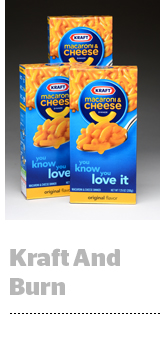
Kraft-Heinz’s $15 billion write-down on Kraft and Oscar Meyer last week shows that underinvesting in marketing and brand hurts long-term growth.
“It indicates investment in innovation and branding is essential,” said Martin Sorrell, CEO of S4 Capital. “In addition to being frugal, you have to invest in product or service innovation and marketing. You’re throwing the baby out with the bathwater if you do one without the other.”
Launch, Market, Repeat
Like many consumer packaged goods giants, Kraft-Heinz started zero-based budgeting in 2013, in which companies reset their yearly budgets rather than incrementally adding on to the prior year’s spend. The tactic, implemented at Kraft by investment firm 3G Capital, was meant to boost profits by cutting expenses like marketing and agency services.
But cutting costs from legacy products like Kraft and Oscar Meyer – which aren’t as popular as they once were – won’t drive profitability alone, said Rob Norman, independent director and advisor and former GroupM exec.
“If you’re in a slow-growth category, you can only capture savings so many times to maintain profitability,” he said. “If you’ve got a fairly constant stream of new brands, marketing makes people aware of those and captures the potential for growth.”
The failure of 3G Capital’s strategy could give Kraft-Heinz more freedom to pare back on what’s not working while investing in growth areas, rather than solely stripping out costs.
The company has already invested in new products like frozen-food brand Devour, which it has grown to $7 million in less than three years, and P3 protein packs, now a “$120 million platform,” CEO Bernardo Hees said on the company’s 2018 earnings call.
But while Kraft-Heinz’s newer products are doing well so far, it’s the older, more widely-distributed brands that drive the most revenue and need the most help from marketing.
Revenge of the big brands
Huge CPGs like Kraft-Heinz must reposition old brands to line up with global trends, Sorrell said. For example, a skincare brand could adopt marketing principles used by Korean companies in the same category, which are popular across the world, or launch direct-to-consumer delivery systems key to reaching younger audiences.
Because traditional brands already have decades of name recognition and cache, repositioning could put them in an even better position in the long-run than new upstarts.
“Call it the revenge of the big brands if you like,” Sorrell said.
With activist investors backing off, marketers will be free to invest more strategically, said Brian Wieser, global president of business intelligence at GroupM.
“If they do cut, they’ll do it for their own reasons,” he said, “not because there’s the proverbial barbarian at the gate.”
But if brands increase their promotional budgets, it won’t be in traditional ways. Big CPGs will have to reinvent the wheel by investing in transformation services that allow them to enter new catogories, said Rishad Tobaccowala, chief growth officer at Publicis Groupe.
“Having differentiated products in a new marketing landscape doesn’t necessarily mean going back to the old ways,” he said.
Companies like Kraft-Heinz used to have great success leveraging their scale – both in terms of getting their products on retailers’ shelves, and in terms of advertising those products to an entire nation.
But traditional scale no longer packs the punch it once did, hence the ability of DTC startups stealing mind and marketshare away from traditional CPG powerhouses.
“In a DTC world where things like the scale of data, networks and ideas become more important,” Tobaccowala said.
As the barrier to launching and marketing a product has come down, pushing around weight for favorable ad and distribution pricing doesn’t translate into savings.
As marketers explore new ways to grow, they’ll mix financial discipline with a recognition that innovation and promotion are areas to invest in, not line items to cut.
“I suspect people might say the 3G strategy is an overcorrection towards efficiency at the expense of innovation,” Norman said. “That’s what we have to be aware of.”
This post was syndicated from Ad Exchanger.


More Stories
NZME’s work recognised at INMA Global Media Awards
Leading Brand Transformation: A Masterclass With Doug Zarkin
Beyond Cookies: Using Location Intelligence To Power Privacy-First Audience Segmentation